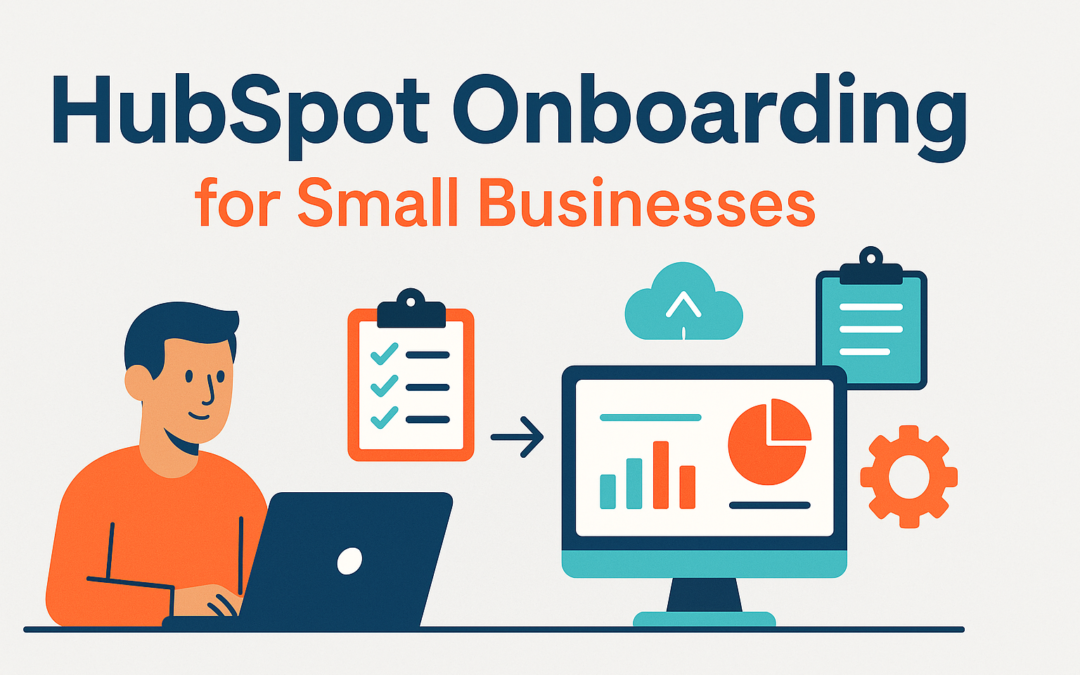For small businesses, every tool you use needs to deliver value fast. There’s no room for bloated software or confusing interfaces. That’s exactly why HubSpot is a great choice it’s user-friendly, scalable, and all-in-one. But here’s the catch: the first experience with HubSpot can be overwhelming if you don’t know where to start.
That’s where onboarding becomes critical. With the right onboarding strategy, even a small team with no technical background can start capturing leads, nurturing prospects, and managing customer relationships seamlessly. This guide is written especially for beginners, no jargon, no fluff just clear steps to get your HubSpot foundation right.
Let’s dive in and walk through each phase of setting up HubSpot, with the clarity and care a small business truly needs.
Understand the HubSpot Ecosystem Before You Dive In
Before setting anything up, take a step back and understand what HubSpot actually includes. Many users get overwhelmed simply because they try to use everything at once. HubSpot is made of multiple “Hubs,” each offering tools for different business functions. You don’t need them all on day one but knowing what’s available helps you plan smart.
Here’s a breakdown:
-
CRM Hub – The free core of HubSpot; manages your contacts, companies, and activities.
-
Marketing Hub – Helps you create and automate email campaigns, forms, landing pages, and lead nurturing.
-
Sales Hub – Enables deal pipeline tracking, email follow-ups, meeting scheduling, and lead prioritization.
-
Service Hub – Offers ticketing, live chat, customer feedback, and knowledge base features.
-
CMS Hub – Let’s you build and manage your website with built-in SEO and personalization tools.
-
Operations Hub – Ideal for syncing data across tools, cleaning up your CRM, and adding advanced automation.
Small businesses usually start with the CRM + Marketing Starter or Sales Starter plans and expand as they grow.
Set Clear Business Goals for Using HubSpot
HubSpot has powerful tools, but without a clear direction, even great tools won’t help. The second step is to define why you’re using HubSpot and what outcomes you expect. Think of onboarding as a chance to build a strategy, not just check off a setup list.
Ask yourself:
-
What do you want to improve – lead generation, email engagement, sales conversion?
-
Which teams will use HubSpot – marketing, sales, support, or all?
-
What does success look like in 30, 60, or 90 days?
Once your goals are clear, HubSpot becomes much easier to use. You’ll know exactly what to focus on – instead of trying to use everything at once.
Examples of clear goals: “Capture 100 leads/month from website forms” or “Shorten our sales cycle by 20%.”
Customize HubSpot to Match Your Business Workflow
HubSpot isn’t just plug-and-play, it’s flexible. That means you can shape it around your own sales and marketing process, instead of changing your business to fit a tool.
Start with:
-
Custom properties: Add fields relevant to your business (e.g., service interest, subscription type).
-
Pipeline stages: Modify deal stages to match your actual sales journey.
-
Contact lifecycle stages: Define what “Lead”, “Opportunity”, and “Customer” mean in your context.
-
Team permissions: If you have multiple users, control who can view or edit what.
Spending a little time on customization now will save hours later.
Set Up Forms, Landing Pages & Email Templates
Now comes the fun part: setting up the tools that generate and convert leads. HubSpot’s drag-and-drop tools make it easy to create forms, landing pages, and email templates, even if you don’t know a single line of code.
Here’s how you can start:
-
Build a simple lead capture form and embed it on your website.
-
Create a landing page offering a free download or consultation.
-
Design a welcome email that gets sent automatically after someone fills out your form.
Even one smart form + automation can start bringing value to your business.
Automate What You Can
Automation is one of the biggest reasons small businesses love HubSpot. It saves you time, eliminates repetitive tasks, and creates a smoother experience for your leads.
Start small:
-
Set up a basic workflow: When someone fills out a form, send them a thank you email and notify your team.
-
Use task automation to assign follow-ups or deals to the right sales rep.
-
Automate lead-nurturing emails spaced over a few days or weeks.
Start with one or two workflows. Don’t try to automate everything at once.
Track Performance with Simple Dashboards
You don’t need to be a data scientist to understand HubSpot analytics. It comes with easy-to-use dashboards where you can see:
-
How many leads did you generate
-
Which emails get opened
-
Which landing pages convert best
-
How many deals are closing, and how long does it take
Create custom dashboards for marketing, sales, or leadership so every team can track what matters most.
With the right dashboards, you can adjust your strategy fast no guesswork.
Final Thoughts
HubSpot onboarding for small businesses doesn’t have to be complex. You don’t need to use every feature right away. Start with the essentials: clean your data, define your process, set up basic automation, and track your results. As you grow, HubSpot grows with you without needing to change platforms or migrate again.
And if you ever feel stuck, remember: onboarding isn’t about doing everything, it’s about doing the right things in the right order.
Need Help With HubSpot Onboarding?
As a certified HubSpot solution partner, we help small businesses launch with confidence. From CRM setup to lead automation, we’ve got your back.

